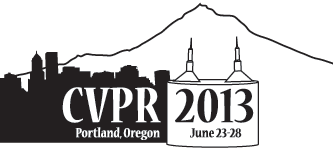-
Area Preserving Brain Mapping
AbstractBrain mapping transforms the brain cortical surface to canonical planar domains, which plays a fundamental role in morphological study. Most existing brain mapping methods are based on angle preserving maps, which may introduce large area distortions. This work proposes an area preserving brain mapping method based on MongeBrenier theory. The brain mapping is intrinsic to the Riemannian metric, unique, and diffeomorphic. The computation is equivalent to convex energy minimization and power Voronoi diagram construction. Comparing to the existing approaches based on Monge-Kantorovich theory, the proposed one greatly reduces the complexity (from n ,tunknowns to n ), and improves the simplicity and efficiency. Experimental results on caudate nucleus surface mapping and cortical surface mapping demonstrate the efficacy and efficiency of the proposed method. Conventional methods for caudate nucleus surface mapping may suffer from numerical instability; in contrast, current method produces diffeomorpic mappings stably. In the study of cortical surface classification for recognition of Alzheimer's Disease, the proposed method outperforms some other morphometry features.
Related Material
[pdf][bibtex]@InProceedings{Su_2013_CVPR,
author = {Su, Zhengyu and Zeng, Wei and Shi, Rui and Wang, Yalin and Sun, Jian and Gu, Xianfeng},
title = {Area Preserving Brain Mapping},
booktitle = {Proceedings of the IEEE Conference on Computer Vision and Pattern Recognition (CVPR)},
month = {June},
year = {2013}
}
CVPR 2013 open access
These CVPR 2013 papers are the Open Access versions, provided by the Computer Vision Foundation.
Except for the watermark, they are identical to the accepted versions; the final published version of the proceedings is available on IEEE Xplore.
Except for the watermark, they are identical to the accepted versions; the final published version of the proceedings is available on IEEE Xplore.
This material is presented to ensure timely dissemination of scholarly and technical work.
Copyright and all rights therein are retained by authors or by other copyright holders.
All persons copying this information are expected to adhere to the terms and constraints invoked by each author's copyright.

